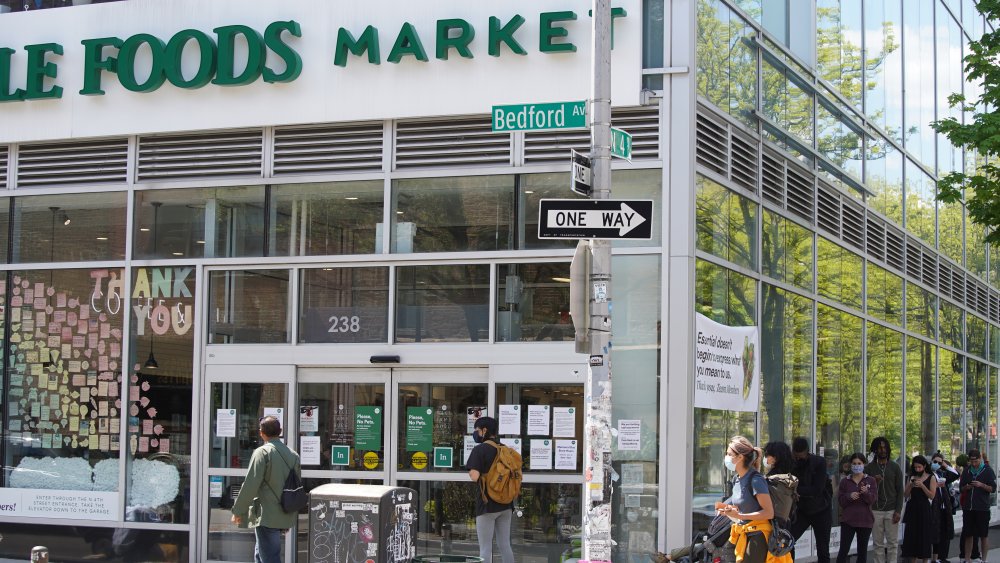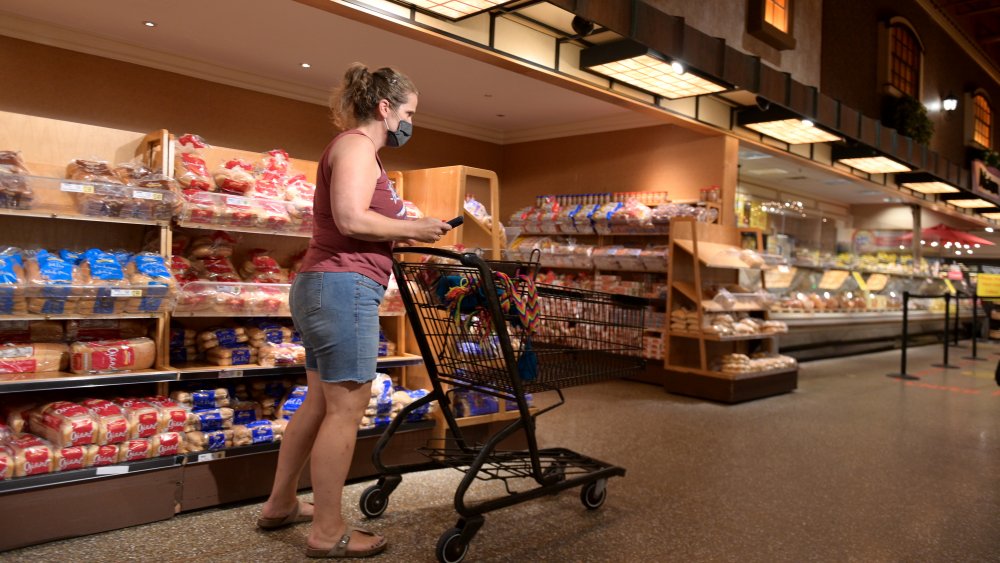The Truth About Whole Foods' Dark Stores
Maybe we should have seen this coming a few years back, when the world's largest online retailer purchased Whole Foods Market. Now, at a time when online grocery shopping has seen tremendous growth thanks to COVID-19 stay-at-home orders, Amazon has opened an online-only Whole Foods (via CNBC).
"Opened" might be the wrong word, considering this Brooklyn Whole Foods location is definitely not open to the public. It's more of an Amazon warehouse exclusively for Whole Foods products, and it started fulfilling grocery delivery orders on September 1. This location has the distinction of being Amazon's first permanent online-only Whole Foods store — what people in the retail industry call a "dark store."
Meanwhile, online grocery sales in the United States have surged, from $4 billion early in the pandemic in March, to $7.2 billion in June (via Supermarket News). Buying groceries online has reached a whole new level since those bygone days when most everyone had never heard of a coronavirus. In August 2019, grocery buying online totaled $1.2 billion, according to Supermarket News.
Amazon has run into some trouble keeping up with the frantic pace of online grocery orders, even putting new customers on a waiting list in April — a situation that was mostly resolved by May (via Amazon). Amazon also temporarily converted six Whole Foods stores into dark stores to meet the increased online demand. Four of those six stores have since reopened to the public (via USA Today).
Amazon wants to keep up with demand for online groceries
Amazon's first-ever permanent dark Whole Foods store is not simply a response to COVID-19. The online-only Whole Foods had been in the works for more than a year (via USA Today).
The growing popularity of online grocery shopping was apparent even in 2019. Online grocery sales increased by 15 percent in 2019 compared to 2018, according to Digital Commerce 360. Amazon was already looking to keep up with a growing trend, and the online giant no doubt wanted to maintain its lead in the online grocery business. The old king of brick-and-mortar retail, Walmart, moved aggressively in 2019 to catch up to Amazon's online grocery business. Walmart has been offering online ordering, with pickup or delivery, at more and more stores over the past couple years and recently partnered with Instacart to help make this happen.
With Amazon stumbling early in the pandemic in its rush to meet demand, Walmart's recent efforts have paid off. Data released in August 2020 showed Walmart passing Amazon in total number of online food and beverage transactions (via Supermarket News). While the survey didn't consider total dollar amounts, it showed that Walmart had 30 percent of all online grocery transactions, compared to 27.1 percent for Amazon.
Meanwhile, Amazon told USA Today that more dark Whole Foods stores may be in our future: "Delivery is here to stay. People like options, and this is an option that they really love."

